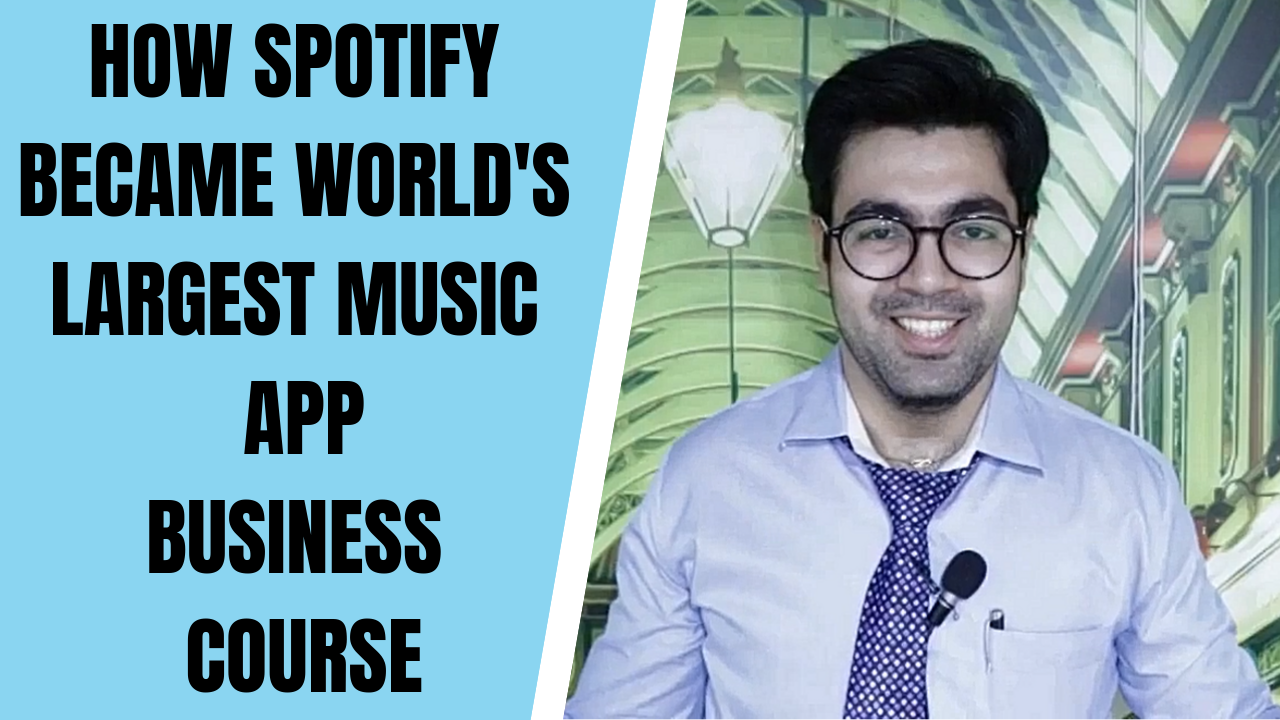The iPhone apps for Spotify, Tinder and Pinterest crashed for users around the world on Friday due to a Facebook bug.
Apple’s app store is an important distribution platform for Spotify. But Appletakes a 30% commission on all sales made through the app store – including music streaming subscriptions – which. Ek previously said that Apple’s restrictions had “a big business impact.” Apple responded last year to the complaint, saying the App Store contributed to Spotify becoming successful. The most egregious of these rules require app developers selling digital goods, including Spotify, to use Apple’s IAP system for in-app purchases on an exclusive basis, and to pay them a 30% tax on every transaction for the first year of subscription and 15% for every year thereafter in perpetuity.
Spotify, Deezer, Epic Games Launch ‘Coalition For App Fairness’ In Challenge To Apple’s App Policy. Unhappy with Apple’s controversial policies surrounding third-party use of its App Store.
Business Of Apps Spotify Subscription
The core issue was in Facebook's software developer kit (SDK) for iOS which embeds Facebook functionality within other apps, for instance allowing people to log in to Tinder using their Facebook accounts.
Launching the apps in airplane mode with WiFi off appeared to let the apps boot without crashing, although as soon as airplane mode is turned off the apps would again crash.
The apps failed to launch because they were attempting to reach Facebook's servers to record any logins, even if the user wasn't logging in with their Facebook account.
This call isn't made when iPhones are in airplane mode, and so the apps continued working - although few of them have any functionality without internet access.
Spotify App Download Free
The underlying services of those apps were still functioning during the incident, and so users could play Spotify music by visiting its website using a web browser.
When app developers embed Facebook's SDK in their apps they can access the company's business intelligence features, tracking and measuring data on how people are using their apps.
More from Spotify
'We are aware and investigating an increase in errors on the iOS SDK which is causing some apps to crash,' Facebook said in a post on its developers forum at the time.

After the issue was fixed a spokesperson told Sky News: 'Earlier today, a code change triggered crashes for some iOS apps using the Facebook SDK.
'We identified the issue quickly and resolved it,' they added after the hours-long outage, before apologising for any inconvenience.

It was the second time this year that a bug in Facebook's SDK has impacted other apps, causing them to crash when launched, after a similar incident in May.
Spotify Technology S.A. applies a business model, generic strategy, and intensive growth strategies that interdependently support multinational expansion. In its business model design, the music streaming company integrates a revenue model with a general business model type that suits operations in providing a marketplace platform for music creators and music consumers. In relation, Spotify’s generic competitive strategy and intensive strategies are directly based on its business model, leading to a system of model aspects and business strategies that ensure organizational growth and expansion in the international on-demand digital content market. The result of this synergy among the generic strategy, intensive growth strategies, and the business model brings operations into alignment with Spotify’s corporate vision and mission statements, and helps deal with competitors, such as Apple, Google, Pandora, and Amazon. Thus, Spotify’s competitive position remains strong for a foreseeable future of continuing global expansion and potential business diversification.
Spotify Technology S.A.’s business model, generic competitive strategy, and intensive growth strategies permeate its organizational design. The business model fundamentally defines how the music streaming company operates. For instance, Spotify’s corporate culture and related human resource management strategies are built upon the requirements and definitions from the business model and the generic and intensive growth strategies described in this business analysis.
Spotify’s Business Model Design
From atop-level perspective of its business, Spotify Technology S.A. has a platform business model, which is a major category ofbusiness models. Aplatform business exploits the advantages of network effects for organizationaldevelopment and strategic management, especially in implementing generic strategies forcompetitive advantage and intensivestrategies for growing the streaming music marketplace. For example, Spotify benefits from moreartists and music consumers using its online service as the business expandsglobally. Still, theory and practice show that a company can have one or more business models or acombination of different designs for business modeling. Thus, from a more specific perspective of theon-demand digital content streaming business operations, Spotify’s business model design has thecharacteristics of the following business models:
- Network effects business model and network orchestrator business model
- Freemium business model
- Unlimited subscription business model
Network Effects & Network Orchestrator Business Models. The application of network effects in Spotify’s business design is observable in the value of increasing the company’s user base. Network effects refer to the positive value and benefit of each additional user, who in this case may be an artist (content creator), or a subscriber (content consumer). For example, the benefit of Spotify’s value chain, resources, and capabilities is increased when more artists and consumers join the platform. The company applies the network orchestrator business model by administering its platform as a marketplace where artists and fans meet. The network effects and network orchestrator business models maximize the music streaming user base and, consequently, economies of scale, which is necessary to support Spotify’s generic strategy for competitive advantage. These business models depend on the effectiveness of the company’s intensive strategies for growth by attracting and retaining more artists and music consumers. The two business models are a major factor in the business strengths enumerated in the SWOT analysis of Spotify Technology S.A.
Freemium Business Model. The freemium businessmodel is typically considered as a revenue model because, in this case,the model defines how Spotify’srevenues are generated from its user base. The company’s streaming service isavailable in two tiers: the advertisement-supported free tier and the premiumtier. For example, Spotify’susers can access songs for free, but with intermittent advertising integrated intotheir listening experience. In contrast, subscribers who pay for the company’s premiumservice can enjoy music without advertisements, along with other premiumfunctions and features that are not available to free-tier users. This business model relates to Spotify’s generic competitive strategyby making the streaming music service available to practically every onlineperson, regardless of intent or capacity to pay for the service. The freemium business model also relatesto the company’s intensivegrowth strategies by enabling competencies in penetrating and developingmarkets. These growth strategies are supported through the easy and wideaccessibility and availability of Spotify’s free and premium online services.
Unlimited Subscription Business Model. This business model involves two main factors: subscription to Spotify’s premium service andunlimited access to the service. The business design emphasis of this model ison customers’ recurring payments to access value-added services. For example, suchvalue is in the form of Spotify’spremium features, starting with the removal of advertising. The company’s costleadership generic strategysupports this business modelby ensuring attractive affordable subscription prices. Also, the intensive strategies ofmarket penetration and market development support Spotify’s unlimited subscription business model by growing thenumber of artists and subscribers to keep the business model feasible and profitable.
Spotify’s Generic Competitive Strategy and Intensive Growth Strategies
Generic Strategy for Competitive Advantage. Spotify applies the cost-leadership generic competitive strategy,which in Michael E. Porter’s framework involves a low cost position forstrategic advantage, and a broad scope for strategic targeting. A low costposition creates strategic advantage for the music streaming business in termsof making the service’s price attractive in the international market. On theother hand, a broad scope is strategically targeted for the purpose of buildingSpotify’s network ofonline users. Both of these characteristics of the generic strategy support the networkeffects business model andthe network orchestrator businessmodel by attracting music artists and subscribers worldwide. As Spotify’s user base grows,the online digital content distribution platform becomes more attractive toartists and fans through network effects. This generic strategy requires that the business apply intensive strategiesfor rapidly growing the market reach of Spotify’s platform operations.
Intensive Strategies for Growth. Spotify’s main intensive growth strategies are market development and market penetration. These two strategies are simultaneously applied in order to strengthen the company’s competitive position as the biggest and leading music streaming business in the global market. Based on the Igor Ansoff Matrix, market development aims to further expand Spotify’s service availability to more countries and regions. On the other hand, market penetration is an intensive strategy that aims to grow the number of users of the on-demand music streaming service in existing markets where the company already has operations. Market development and market penetration provide competitive advantage to Spotify’s operations based on economies of scale, while also supporting the network effects business model and the network orchestrator business model: as the population of artists and subscribers grow, the music-streaming platform becomes even more beneficial and valuable to the artists and subscribers. In addition, these intensive growth strategies increase the cost leadership generic strategy’s effectiveness via economies of scale. The application of these intensive growth strategies requires related changes in Spotify’s organizational structure, as more business offices or locations are added. Product development is also applied as an intensive strategy for Spotify’s growth. For example, the company develops and introduces new products, such as new apps and music-related services, sometimes with the involvement of business partners via new alliances.
Implications of Spotify’s Business Model and Generic & Intensive Strategies
Spotify Technology S.A.’s successful multinational expansion, organizational growth, and strategic positioning are attributable to the effective implementation of a business model, intensive growth strategies, and generic competitive strategy suited to the operational objectives of the music platform enterprise. The company’s business model characteristics may change as the organization and music streaming service evolve. For instance, further acquisitions and expansion with new online services in addition to curated playlists and related programs is realistically expectable in Spotify’s future. These future changes may lead to additional business models or design characteristics added to the overall platform business model. Also, Spotify could adjust the relative significance and prioritization levels of its intensive growth strategies, with some modifications of the cost leadership generic strategy for the competitive advantage and growth of the streaming music business.
References
- Adelman, I., & Levy, A. (1984). The equalizing role of human resource intensive growth strategies: A theoretical model. Journal of Policy Modeling, 6(2), 271-287.
- International Trade Administration of the U.S. Department of Commerce – The Media and Entertainment Industry in the United States.
- International Trade Administration of the U.S. Department of Commerce – The Software and Information Technology Services Industry in the United States.
- Manteghi, N., & Zohrabi, A. (2011). A proposed comprehensive framework for formulating strategy: A Hybrid of balanced scorecard, SWOT analysis, Porter‘s generic strategies and Fuzzy quality function deployment. Procedia-Social and Behavioral Sciences, 15, 2068-2073.
- Nenonen, S., & Storbacka, K. (2010). Business model design: Conceptualizing networked value co-creation. International Journal of Quality and Service Sciences, 2(1), 43-59.
- O’Farrell, P. N., Kitchens, D. M., & Moffat, L. A. R. (1993). The competitive advantage of business service firms: A matched pairs analysis of the relationship between generic strategy and performance. Service Industries Journal, 13(1), 40-64.
- Prasad, P. (2014). Ansoff wrote rules for corporate strategy. Management Today, (Jan/Feb 2014), 45.
- Spotify Announces Strategic Acquisitions to Accelerate Growth in Podcasting.
- Spotify Launches in India.
- Spotify Technology S.A.’s Annual Report to the U.S. Securities and Exchange Commission (Form 20-F).
- Spotify Technology S.A.’s Website.
- Varadarajan, P., & Dillon, W. R. (1982). Intensive growth strategies: A closer examination. Journal of Business Research, 10(4), 503-522.
- Zott, C., & Amit, R. (2010). Business model design: An activity system perspective. Long Range Planning, 43(2-3), 216-226.